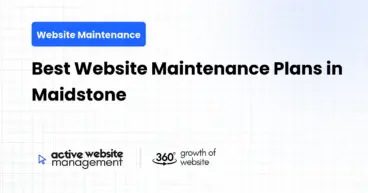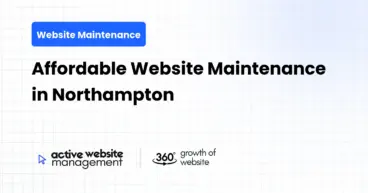January 3, 2025
8 min read
In today’s competitive online market, product images are crucial for the success of any eCommerce website. They not only showcase the product but also influence the customer’s buying decision. If you want to stay ahead of the competition, optimizing your product images for speed, quality, and user experience is essential.
This comprehensive guide will walk you through top strategies for optimizing product images on eCommerce sites. These strategies will not only help your site load faster but will also improve your search engine rankings, user experience, and ultimately, your sales.
1. Why Image Optimization is Critical for eCommerce Websites
Before diving into the strategies, let’s take a moment to understand why image optimization is so crucial.
1.1 Faster Page Load Times
Images that are too large or improperly formatted can significantly slow down your website. Slow-loading pages frustrate users and lead to higher bounce rates. According to Google, if your website takes more than 3 seconds to load, you are likely to lose almost half of your visitors. Faster websites, on the other hand, not only keep users engaged but are also favored by search engines like Google.
1.2 Enhanced User Experience
Product images are the first thing customers interact with when browsing an eCommerce store. Clear, high-quality images give potential buyers confidence in the product. However, large and unoptimized images can cause slow page loads, which hampers the overall shopping experience.
Don’t Just Maintain Your Website—
Grow It using Active Website Management! Don't Wait for Growth—Accelerate It with Active Website Management
1.3 SEO Benefits
Optimized images contribute to better SEO, helping your website rank higher in search results. Search engines use image alt text to understand what the image is about. Additionally, optimized images improve your site’s mobile experience, which is crucial for SEO rankings.
1.4 Increased Conversion Rates
Well-optimized images can improve product presentation and make your site more attractive. According to research by Baymard Institute, 22% of users abandon their carts due to poor product image quality. Optimizing product images not only enhances the presentation but also builds trust, which can lead to more sales.
2. Key Strategies for Optimizing Product Images on eCommerce Sites
The first step in optimizing your product images is choosing the right file format. Different formats have different strengths, and understanding these will help you pick the best one for your product images.
JPEG (Joint Photographic Experts Group)
- Best for: Photographs and images with many colors or gradients.
- Advantages: JPEG offers a great balance between file size and image quality.
- Compression: It supports lossy compression, reducing file size while maintaining reasonable quality.
PNG (Portable Network Graphics)
- Best for: Images with transparent backgrounds, logos, and graphics.
- Advantages: PNG supports lossless compression, meaning it retains image quality.
- When to use: Use for icons, logos, and images that need high quality and transparency.
WebP
- Best for: Optimizing both image quality and file size.
- Advantages: WebP combines the best of both JPEG and PNG. It’s supported by most modern browsers and provides high compression rates with excellent quality.
GIF
- Best for: Animations and simple images with few colors.
- Advantages: GIF supports animations and is suitable for simple images but not for product images due to the low quality.
2.2 Compress Images Without Sacrificing Quality
Compression is a powerful tool for reducing the file size of your product images. The smaller the file size, the faster the image loads, improving the overall performance of your website. However, you want to avoid compromising too much on the quality of the image.
Don't Wait for Growth—Accelerate It with
Active Website Management Don't Wait for Growth—Accelerate It with Active Website Management
Tools for Image Compression:
- TinyPNG: A popular tool that reduces file size while maintaining image quality.
- ImageOptim: A macOS tool for compressing images.
- Optimizilla: A web-based tool that can compress both JPEG and PNG files.
Best Practice: Aim for 50% to 70% compression. This range typically provides a good balance between file size and image clarity.
2.3 Use Lazy Loading for Images
Lazy loading is a technique that delays the loading of images until they are needed. Instead of loading all images as soon as the page loads, lazy loading ensures that images only load when they are about to appear in the user’s viewport (i.e., as they scroll down).
Benefits of Lazy Loading:
- Improves Page Speed: Reduces initial page load time by loading images only when necessary.
- Saves Bandwidth: Lazy loading helps save bandwidth for users who might not scroll through the entire page.
You can easily implement lazy loading using plugins or by adding the loading="lazy" attribute to your <img> tags.
2.4 Optimize Image Dimensions
Another key strategy in image optimization is ensuring your product images are the right size. Resize your images to match the dimensions needed for your website. Don’t upload images that are larger than necessary.
Best Practices for Image Dimensions:
- Resize before Uploading: Upload images that are the exact size needed on the page to avoid resizing in the browser, which can affect load times.
- Use Responsive Images: For mobile users, ensure images adapt to different screen sizes. This can be done with the
srcset attribute, which allows you to serve different sizes based on screen resolution.
2.5 Add Descriptive ALT Text
Search engines can’t “see” images, but they can read ALT text (alternative text), which is a description of the image. ALT text serves two purposes: it helps search engines understand what the image is about, and it provides context for users with disabilities who use screen readers.
Best Practices for ALT Text:
- Be Descriptive: Write clear, concise descriptions of the image. For example, instead of “shoe.jpg,” use “blue-running-shoes.jpg.”
- Incorporate Keywords: Where possible, use relevant keywords naturally in your ALT text. For example, “buy-men’s-running-shoes” instead of “shoe.”
2.6 Use Image CDN for Faster Delivery
An Image Content Delivery Network (CDN) is a system of servers located across different geographic regions to deliver images quickly to users based on their location. CDNs store copies of your images on multiple servers, ensuring fast loading times regardless of the user’s proximity to the server.
Benefits of Image CDNs:
- Faster Image Delivery: CDNs automatically serve images from the closest server, reducing latency and speeding up load times.
- Automatic Image Optimization: Many CDNs offer built-in image optimization tools that automatically compress and resize images.
Some popular image CDN providers include:
2.7 Choose the Right Image Resolution
For product images, resolution plays a crucial role in the image’s quality. You want high-resolution images that allow zooming in but not so high that they slow down your site.
Best Practices for Resolution:
- Standard Resolution: Aim for 72 DPI (dots per inch) for web images. This resolution is ideal for online viewing and ensures faster loading times.
- High-Quality Zoom Images: For zoom-in functionality, upload images with a higher resolution, but compress them properly.
2.8 Implement Image Sitemaps
An image sitemap helps search engines discover and index images on your eCommerce site more effectively. It is especially important for products with many images, such as different angles or color variations.
Benefits of Image Sitemaps:
- Better Image Indexing: Search engines can find and index images faster.
- Enhanced SEO Visibility: Your product images are more likely to appear in image search results, driving more traffic.
You can create an image sitemap manually or use plugins like Yoast SEO (for WordPress) that automatically generate sitemaps for you.
WebP is a relatively new image format developed by Google that provides superior compression without sacrificing quality. It offers both lossy and lossless compression, making it ideal for eCommerce product images.
Why Use WebP?
- Smaller File Sizes: WebP images are often significantly smaller than PNG and JPEG images.
- Faster Loading Times: Smaller images load faster, improving the overall speed of your eCommerce site.
While WebP is supported by most modern browsers, you should also provide fallback images in JPEG or PNG for unsupported browsers.
3. Active Website Management for Continuous Improvement
Optimizing your product images is just one step in the ongoing process of maintaining a high-performing eCommerce website. That’s where Active Website Management (AWM) comes in. At AWM, we offer continuous optimization of your website, including SEO, performance, security, and content updates. We handle every aspect of your website’s health, ensuring it evolves with your business.
For eCommerce websites, having an Active Website Management service can help with regular updates to images, SEO strategies, and more.
4. Conclusion
Optimizing product images is crucial for the performance, user experience, and success of your eCommerce site. By following the strategies outlined in this article, you can ensure that your product images are not only visually appealing but also optimized for speed, SEO, and mobile use.
If you need help implementing these strategies or want continuous support for your eCommerce site, consider leveraging Active Website Management. With regular updates and optimizations, your website will remain fast, secure, and primed for growth.






